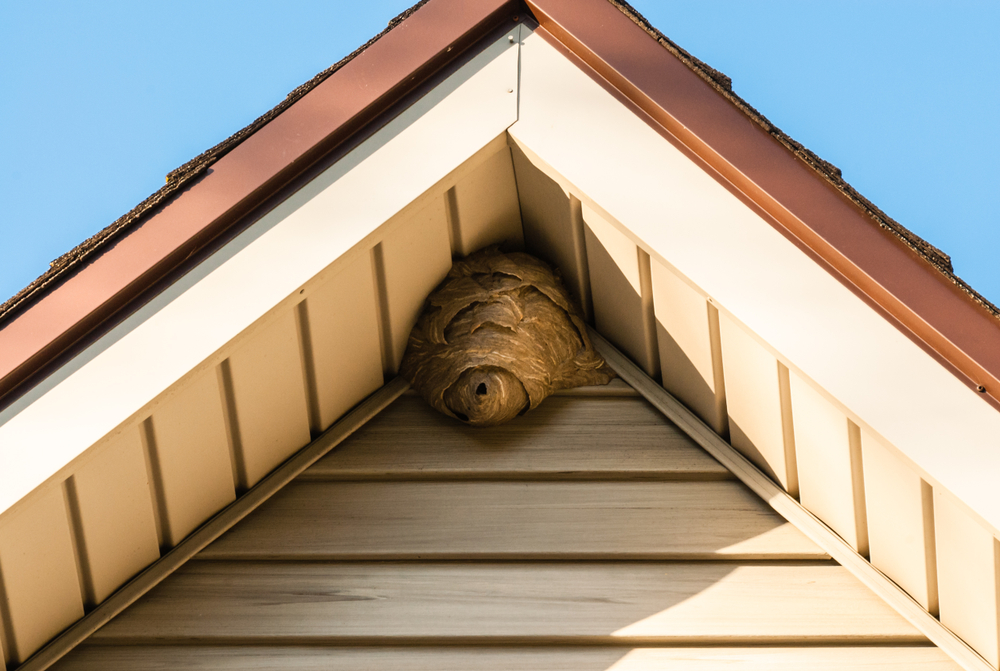4 Bee Proofing Techniques You Should Try

Many of our San Diego bee removal customers don’t think of bee proofing until after they’ve had a honey bee or wasp infestation. Once they go through the frustration of dealing with an invasion, they quickly realize they don’t want that experience again.
Honey bees are especially industrious and work hard to sustain their colonies. If they are seeking a place to build their hive, they won’t stop until they find one. And they certainly don’t care if the ideal location is inside the wall of your home. At D-Tek Live Bee Removal, we have found bee hives in some interesting locations. Our experience tells us to never underestimate the dedication of a honey bee.
Bee proofing your home can save you frustration, time and money down the road. However, it is important for our San Diego home and business owners to understand that there is no 100% guarantee when it comes to bee proofing. Over time, our homes shift and weather erodes surfaces. Bee proofing is something that must be considered regularly and receive attention every season.
But don’t fret! There are things that you can do to deter a honey bee swarm from building a hive on your property. Here we will share our top tips for bee proofing your San Diego home. If you are concerned about a hive or swarm on your property, call us at D-Tek Live Bee Removal to learn more about our complete home bee proofing services.
How to Bee Proof Your Home
Locate access points
The first thing you should do is perform a thorough assessment of your property. Honey bees only need 1/8th of an inch to access a space. These access points can be hard to find. It takes time and diligence to locate and seal areas that can provide easy access for honey bees.
Be sure to check vents that lead into your home, especially those that lead into your attic. Assess the condition of windows, screens, soffits, door frames and window frames. Look for cracks in exterior walls, including in the siding, cement or stucco. Inspect your roof line for signs of damage or decay.
Remove obvious shelter locations
Educate yourself on where bees like to establish their hives. In addition to accessing your home through cracks, holes and other entry points, bees may also build their nests inside or underneath trash and other items around your yard. Some common yard furniture that may attract honey bees include:
- Old vehicles
- Swing sets
- Tractors
- Piles of wood
- Tires
- Appliances
- Boxes
- Play sets
In addition, avoid leaving piles of trash for extended periods of time. Keep your yard landscaped to prevent overgrowth.
Remove water sources
Bees require water to live. They also use water to maintain the temperature of their hive. Because this is a vital element of their survival, bees will be attracted to water sources. Although you may not be able to move a lake or stream, you may be able to eliminate other sources of water in and around your property.
Check your property for leaks in your irrigation system or standing puddles. Consider removing birdbaths or relocating water bowls for your pet.
Perform regular inspections of your property
A bee hive can seemingly come out of nowhere. While a few bees is probably nothing to be concerned about, a noticeable increase in bee activity could indicate that you have a hive on your property. Perform regular, monthly inspections so you can quickly become aware of the signs of a colony.
If you notice bees entering and exiting at one location, it is a surefire sign that you may have a bee infestation on your hands. Even if you can’t identify the bees visually, you may be able to hear loud buzzing in the location of the hive.
Consult With a Live Bee Removal Company
At the first sign of a colony on your property, contact the live bee removal experts at D-Tek Live Bee Removal. Our team can help you evaluate your infestation and provide professional bee proofing services to keep your property safe and secure.
With D-Tek Live Bee Removal, you can feel confident that you have a professional and highly trained live bee removal technician assisting you.
